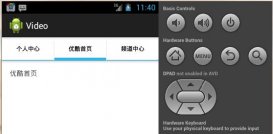对于了解Android程序设计的人都知道,广播是Android开发中的一个重要的功能,在Android里面有各式各样的广播,比如:电池的状态变化、信号的强弱状态、电话的接听和短信的接收等等,今天本文就来给大家简单介绍一下系统发送、监听这些广播的机制。
Android中的广播机制基本如下图所示:

那广播在Android程序中到底是如何运行的呢?下面将以代码的形式给大家好好分析一下:
一、发送广播
Intent是Activity中发送广播的桥梁,通过他我们可以轻松的将广播发送到系统中,具体的实现如下:
|
1
2
3
4
|
final String Intent_Action = "com.android.BroadcastReceiverDemo";//定义广播,方便我们接收这个广播Intent intent = new Intent(Intent_Action);intent.putExtra("name", "小米");Activityone.this.sendBroadcast(intent); |
可能你会疑惑Intent_Action的用处,因为Android内部存在大量的广播,我们通过Intent_Action可以唯一的接收这条广播。
二、接收广播
接收广播时我们需要定义一个BroadcastReceiver的子类,来接收我们发出的广播,通过重写BroadcastReceiver的onReceive()方法来对接到的广播做出响应。
|
1
2
3
4
5
6
7
|
public class MyBroadcastReceiver extends BroadcastReceiver{@Overridepublic void onReceive(Context context, Intent intent) {// TODO Auto-generated method stub String name = intent.getStringExtra("name");//获得广播发出者传递的值 Toast.makeText(context, name, Toast.LENGTH_SHORT).show();} |
三、配置广播
具体配置文件部分代码如下:
|
1
2
3
4
5
6
7
8
9
|
<receiver android:name="cn.edu.hpu.android.activity_broadcast.MyBroadcastReceiver" android:enabled="true" > <intent-filter > <action android:name="com.android.BroadcastReceiverDemo" /> </intent-filter> </receiver> |
在这里一定要保证android:name="com.android.BroadcastReceiverDemo",高亮的内容和我们在发送广播时设置Intent_Action的内容一致。
希望本文示例对大家的Android程序设计有所帮助。














